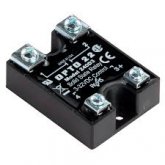Steve_S
Offgrid Cabineer, N.E. Ontario, Canada
Another bit of goodness from Will !
It is well documented by victron that battery protect is not to be used between batteries and inverter.I'm not sure I agree with this one. While it works, you're bypassing the safety mechanisms of the BMS and need to ensure you place appropriate fuses in-line with the inverter/load to protect the current draw and a potential short circuit.
Factoring safety variables into a design is inherently implied in these videos, but it could be beneficial to provide an overview as the audience increases.
Proposing an alternative... a Victron Battery protect would be the better option and is equivalent price-wise. There are 65/100/220 amp options.
https://www.victronenergy.com/battery_protect/battery-protect
I'm not sure I agree with this one. While it works, you're bypassing the safety mechanisms of the BMS and need to ensure you place appropriate fuses in-line with the inverter/load to protect the current draw and a potential short circuit.
Factoring safety variables into a design is inherently implied in these videos, but it could be beneficial to provide an overview as the audience increases.
Gotcha but then why pay way more to do same thing.Correct, but you can use the remote on/off switch to trigger the inverter on a fused circuit - it's essentially the same thing and you can now manage your remaining DC loads through the same battery protect. You get an alarm circuit and a warranty, and the option to use a cheap BMS for charge regulation only.
My main point was more around the safety dynamic. Folks need to factor these in when working around a BMS.
I have that SSR now wired up and working with chargery BMS. measured 13k ohm when relay is closed with my fluke. Infinite when open.thanks @BiduleOhm . i was doing that math too... 12v/1000ohm = 12mA. was wasn't entirely sure how to interpret that 1000 ohm impedance in the spec.
I'm an ME not EE and beyond Ohms law, a lot of the limited coursework is faded in my brainYou can't measure the resistance if you power the relay at the same time. But you can measure the current if you want.
You can... my guess is you wired it backwards so yeah, then it's equivalent to a diode as pretty much any mosfet will have a parasitic body diode included.



